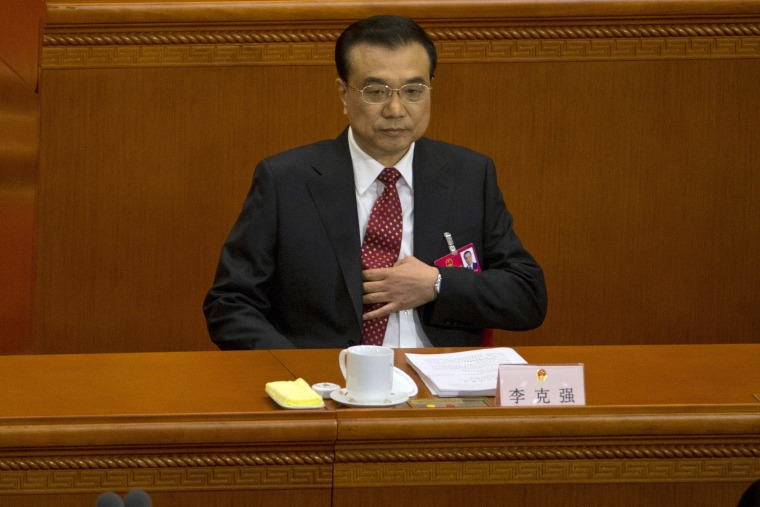BEIJING — China faces a tough battle to keep its economy growing by at least 6.5 percent over the next five years while creating more jobs and restructuring inefficient industries, Premier Li Keqiang said as he opened China's annual parliament on Saturday.
Growth of 6.5 percent would mark a ripping pace for most countries but would be the slowest in China in a quarter century as world's No. 2 economy grapples with gyrating financial markets, softening global trade and efforts to reduce environmental degradation.

"Our country's development faces more and greater difficulties ... so we must be prepared for a tough battle," Li said.
In 2016, Beijing will aim for an economic growth rate between 6.5-7 percent, as Reuters previously reported, with a consumer inflation target of around 3 percent and money supply expansion of around 13 percent, according to a series of draft reports ahead of the opening of the 12-day parliament.
Many investors had been hoping China would post an aggressive target for fiscal spending to prop growth.
But the draft goal of running a fiscal deficit equivalent to 3 percent of GDP, while up from the previous year's target of 2.3 percent, still disappointed some who had hoped for a number closer to 4.
Related: U.S. Economy Adds 242,000 Jobs in February; Unemployment Rate Holds Steady
"The budget deficit of 3 percent is not enough and should be increased," economist and former central bank advisor Yu Yongding told Reuters on the sidelines of the meeting.
Zhou Hao, economist at Commerzbank in Singapore, said the low figure may reflect concerns that a higher number would signal tolerance for another spree of debt-fueled growth such as that Beijing embarked on in 2009.
Moody's recently downgraded the outlook for Chinese sovereign debt, a move Chinese regulators said was unjustified.
"The pressure from rating agencies could be something China has to consider, indicating that China is cautious on rolling out large infrastructure investment that could result in long-term debt issues," Zhou said in a email.
The reports provide a blueprint of China's aspirations for the next five years across a range of sectors and measures.
They show Beijing trying to strike a balance between holding up growth and restructuring underperforming industries, where so-called "zombie firms" are responsible for much of the country's corporate debt overhang left over from the 2009 stimulus.
Related: World's Super Rich Got Less Super Rich in 2015
In lead up to parliament, the government flagged major job losses in key coal and steel industries. Overall, China aims to lay off 5-6 million state workers over the next two to three years, two sources said, in Beijing's boldest retrenchment program in almost two decades.
Li said the country will create 10 million new jobs, address zombie firms through mergers, bankruptcies and debt deals, and hold the urban registered unemployment rate below 4.5 percent in 2016.
Seeking to improve the environment, Beijing aims to cap total energy consumption at 5 billion tonnes of standard coal by 2020 and set targets for improving water efficiency.
China will increase military spending by 7.6 percent this year, its lowest increase in six years, as it pursues a modernization plan that will shrink staffing.
Unlike previous years, the documents did not mention a specific target for trade figures, having missed their goals repeatedly in recent years.
Weighed down by sluggish demand at home and abroad, industrial overcapacity and faltering investment, China's economic growth slowed to 6.9 percent in 2015.
Economists widely expect it to cool further to a still-healthy rate of around 6.5 percent this year.